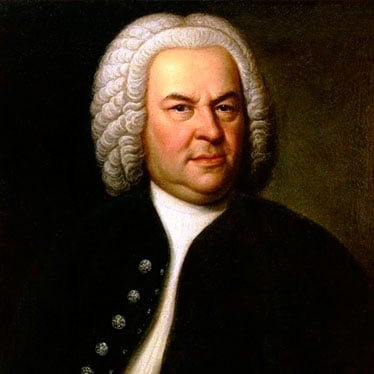24 Fascinating Facts About JS Bach

When you hear the word "Baroque," chances are Johann Sebastian Bach immediately comes to mind. And rightfully so—he’s widely regarded as one of the defining composers of the Baroque era. His music remains a cornerstone of classical repertoire, celebrated by musicians, scholars, and music lovers alike.
But what many don’t realize is that Bach’s fame wasn’t always secure. In fact, were it not for a few passionate admirers and a timely revival, his genius might have faded into obscurity—remembered only as a master organist, an academic mind, or just "the guy with the white powdered wig."
Thankfully, that didn’t happen.
Visionaries like Mozart, Beethoven, and Mendelssohn recognized Bach’s brilliance. It was Felix Mendelssohn who, in 1829—nearly 80 years after Bach’s death—resurrected The Passion According to St. Matthew with a historic performance in Berlin. The concert reignited global interest in Bach’s music, securing his legacy as one of the greatest composers in Western music history.
Want to know more about this extraordinary figure? Here are 24 fascinating facts and bits of trivia about the life and legacy of Johann Sebastian Bach.
The Life of a Legend: 24 Facts About J.S. Bach
- Bach was born on March 31, 1685 in Eisenach, Thuringia, Germany—into a long line of musicians.
- Music ran deep in his blood. His father, Johann Ambrosius Bach, was a 7th-generation musician who taught young Johann the violin.
- Tragedy struck early. Orphaned at age 10, Bach moved in with his older brother, Johann Christoph, who introduced him to the organ.
- He was awarded a choral scholarship in 1700 to attend St. Michael’s School in Lüneburg because of his beautiful singing voice.
- At just 18 years old, Bach landed his first job as an organist in Arnstadt in 1703, providing music for services and teaching local students.
- In 1707, he moved to Mühlhausen to take another organist position at the Church of St. Blaise.
- He married his cousin, Maria Barbara Bach, and had seven children. Two of his sons, Wilhelm Friedemann and Carl Philipp Emanuel, became prominent composers.
- In 1708, Bach began working as a court organist for Duke Wilhelm Ernst of Weimar, where he composed the iconic Toccata and Fugue in D Minor.
- He impressed royalty. In 1714, Crown Prince Frederick of Sweden was so taken with Bach’s playing that he gifted him a diamond ring.
- He was jailed for several weeks in 1716 after abruptly resigning from his Weimar post to work for Prince Leopold of Köthen.
- After his release, Bach became conductor of Prince Leopold’s court orchestra—an ideal environment for composing secular instrumental works.
- He almost met Handel. In 1719, Bach attempted to meet George Frideric Handel, but despite being just 130 kilometers apart, the meeting never happened.
- In 1720, tragedy struck again. Maria Barbara died suddenly while Bach was away. He composed the heart-wrenching Chaconne from the Partita in D Minor for solo violin in her memory.
- A year later, Bach married again— this time to Anna Magdalena Wülcken. They had 13 children together.
- The Köthen period was his most prolific for instrumental music, including many suites, sonatas, and concertos.
- In 1723, Bach moved to Leipzig, where he became the cantor at St. Thomas Church and school—composing weekly church cantatas and teaching students.
- Most of his sacred choral works were written in Leipzig, including the Mass in B Minor and St. Matthew Passion.
- Faith was central to his work. Even in secular compositions, he often inscribed “I.N.J.” on his manuscripts—Latin for In Nomine Jesu ("In the name of Jesus").
- The famous Brandenburg Concertos were written in 1721 and dedicated to the Margrave of Brandenburg.
- He wrote The Well-Tempered Clavier as a set of instructional pieces to help keyboard students master all 24 major and minor keys.
- He met Frederick the Great of Prussia in 1747, who challenged Bach to compose a fugue based on a royal theme—resulting in the Musical Offering.
- His last major work, The Art of Fugue, was left unfinished when his health declined.
- Bach lost his sight after a failed eye surgery and died of a stroke on July 28, 1750, in Leipzig at age 65.
- Despite never leaving Germany, Bach’s music eventually reached every corner of the world. His entire life was spent within a relatively small region—smaller than most U.S. states.
Johann Sebastian Bach is often considered the quintessential Baroque composer—and one of the most important figures in all of music history. His intricate counterpoint, emotional depth, and structural precision continue to challenge and inspire musicians today.
Had it not been for the reverence of later composers and the historical revival sparked by Mendelssohn, we might not be celebrating him as we do now.
In the words of Johannes Brahms:
“Study Bach: there you will find everything.”
